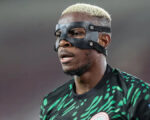The Los Angeles Dodgers’ pitching rotation has been the most dominant force of this year’s MLB playoffs, with L.A.’s four aces combining for a microscopic 1.40 ERA and 81 strikeouts over 10 postseason starts.
With seemingly every performance from Blake Snell, Yoshinobu Yamamoto, Tyler Glasnow and Shohei Ohtani comes a new wave of stats that convey the rarity of their achievements racing around social media.
As L.A.’s four starters prepare to face the the Toronto Blue Jays in the World Series, we’re here to get you ready for their Fall Classic appearances with a guide to what each does best and the pitch mix that makes the quartet so dominant.
Blake Snell: The Game 1 guy
Jeff Passan »
This year, he took a big step forward and looks more than worth his $325 million deal, throwing 173⅔ innings with a 2.49 ERA and sparkling peripherals that added up to a 5.0 WAR regular season. If you consult run values, all six of his pitches were better in 2025 than 2024, in addition to throwing almost twice as many innings. What did he change?
The velocity and movement of his pitches are basically the same and the usage of those pitches was basically the same, other than shifting 5% usage of his curveball to his cutter, as he improved the movement on his cutter by a few inches.
How he uses his pitches: Take a look at the subtle shifts with his two best pitches: his four-seam fastball and splitter. Here are the locations of his fastball against right-handed hitters in the 2024 regular season (left) and 2025 regular season (right).
third best in baseball.
When Yamamoto is dealing, it’s because of those two pitches, which are his most-used offerings against lefties and righties. And yes, they also tunnel well:
Yoshinobu Yamamoto, 98mph Fastball and 93mph Splitter, Overlay
Good luck. 😳 pic.twitter.com/RDlNGBMTSd
— Rob Friedman (@PitchingNinja) September 7, 2025
Tyler Glasnow: The 6-foot-8 power arm
Schedule, bracket, more »
He has a natural ability to cut the ball, so his fastball has near-cutter break while sitting in the mid-90s, his slider has typical movement but comes in 3 mph harder than the average slider and his curveball is also harder than the average bender — with six extra inches of drop.
He relies on that curveball against lefties because he doesn’t throw a changeup, and the slider is the breaker of choice against righties.
Glasnow’s use of these three main pitches puts the hitter in conflict. He takes away their time to make decisions by throwing hard, and though he can’t get huge horizontal movement, he can tunnel the pitches so they look the same when the hitter is trying to decide. I could show you a plot of how he executes this, but it’s easier to see in video. Here’s a typical attack plan versus a right-handed hitter:
Tyler Glasnow, 97mph Fastball (foul) and 89mph Slider (Sword K), Individual Pitches + Overlay. pic.twitter.com/usSXo0Hng5
— Rob Friedman (@PitchingNinja) August 31, 2025
Glasnow’s game is one of extremes, but when he’s healthy and executing, he’s nearly unhittable.
Shohei Ohtani: The two-way sensation
What he’s done this October: 2.25 ERA, 14.3 K/9 in 12 IP
What makes him so good: You mean besides being a three-time MVP (who is about to win his fourth award) as the most dominant two-way force the sport has seen — fresh off one of the most incredible performances in postseason history?
Well, the funny thing about Ohtani is his eye-popping numbers at the plate and the two-way accolades make it easy to forget how good he is just as a pitcher. In a career that spans 100 regular-season starts, Ohtani has posted a 2.87 ERA and struck out 670 batters in 528⅔.
How he uses his pitches: You remember Ohtani being a really good pitcher in 2023 with the Angels, and now he somehow seems better. How? Well, it’s pretty simple:
His velocity is up a few tenths on most of these pitches in the postseason, too, as you’d expect.
Before the «velocity isn’t everything» crowd blows a gasket, Ohtani’s Zone% and Strike% are better in 2025 than 2023, and the shapes of his pitches haven’t really changed. He gave back an inch or so of movement on some of those offspeed pitches, a good swap given what the industry understands about pitching development.
When scouts in any sport talk about athleticism, it’s usually about several things that standout athleticism can affect. In Ohtani’s case, it’s quite obvious: He’s one of the best hitters, and at age 31, after multiple elbow surgeries, he can improve his velocity and strike-throwing at the same time when he was already one of the better pitchers in the game.








